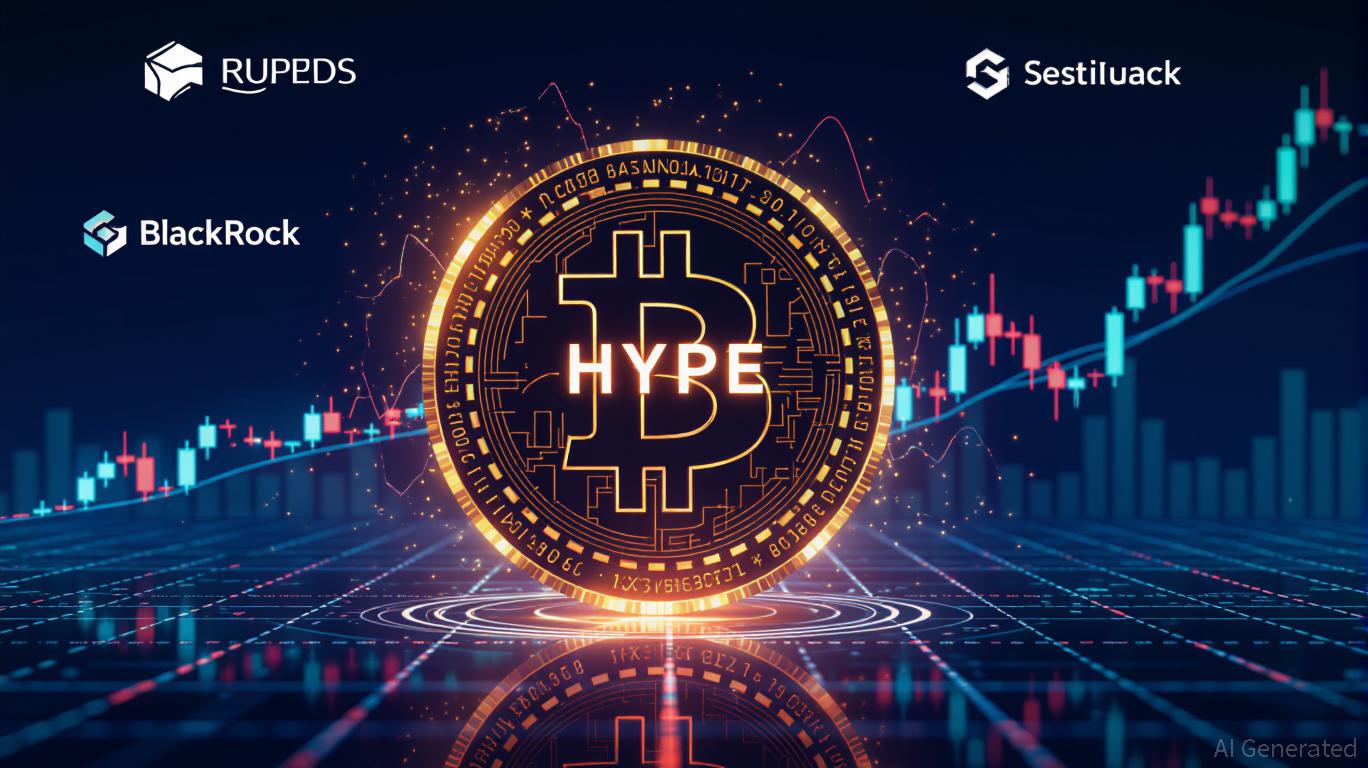The HYPE token, which is the native asset of the Hyperliquid decentralized exchange (DEX), has become a central topic in the cryptocurrency space, representing both the volatility of speculative trading and the potential for mainstream institutional involvement. In the last two years, its value has experienced significant fluctuations,
reaching a high of $57.38 towards the end of 2025
as optimism surged due to technological advancements and large-scale investor accumulation. However, by November 2025, the price had dropped to approximately $35,
fluctuating within a wide band between $24.51 and $35.51
. This level of instability highlights the immediate risks associated with speculative digital assets, even as Hyperliquid’s forward-thinking developments and institutional collaborations suggest a more secure future.
Short-Term Speculative Risks: A Volatile Landscape
The dramatic price movements of HYPE are influenced by a mix of global economic trends, unclear regulations, and competitive pressures. In late 2025,
the token experienced a 22.6% drop from its highest point
as sellers took advantage of gains and broader market uncertainty set in.
One major contributor was the release of 237.8 million HYPE tokens
over a two-year period, which increased the circulating supply and intensified downward price momentum. At the same time,
rivals such as Aster
chipped away at Hyperliquid’s market dominance.
Uncertainty around regulations remains a significant concern. Although Hyperliquid has adapted well to the shifting crypto environment,
the lack of definitive U.S. rules
for decentralized finance (DeFi) tokens leaves the door open for abrupt regulatory changes that could impact trading activity or investor confidence. For those trading in the short term, these elements—combined with the token’s history of volatility—present considerable hazards.
Experts warn that HYPE may continue to trade within a set range until 2026
, with stabilization between $30 and $60 likely only if renewed bullish sentiment emerges.
Long-Term Institutional Adoption: A Path to Legitimacy
Despite these obstacles, Hyperliquid’s embrace by institutions in 2025 has set the stage for sustained expansion.
The platform now commands 70–80% of the decentralized perpetual futures sector
, largely due to the HIP-3 Growth Mode initiative, which
reduced taker fees by as much as 90% and fueled greater liquidity
. This approach drew in both individual and institutional participants,
with weekly trading volumes reaching an average of $47 billion
by the end of 2025.
Confidence from large-scale investors has grown further through alliances with industry leaders.
Hyperliquid’s partnership with BlackRock and Stripe
to launch USDH—a stablecoin supported by U.S. dollars and short-term government bonds—has created a vital entry point for institutional funds, decreasing dependence on more volatile stablecoins like
Tether
.
Likewise, the collaboration with 21Shares
on a proposed SEC-approved ETF for HYPE tokens marks a significant step toward connecting DeFi with traditional finance, potentially opening the door to mainstream capital.
The token’s economic design also helps align interests for the long haul.
Hyperliquid’s $1 billion digital asset reserve
, created through the merger with Hyperliquid Strategies, is intended to buy and stake HYPE tokens, ensuring liquidity and governance stability. These measures, along with
the platform’s robust buyback program
—which allocates 97% of trading fees to repurchasing HYPE—demonstrate a clear strategy to counteract selling pressure and foster price growth.
Regulatory Clarity: A Double-Edged Sword
The SEC’s review of the 21Shares Hyperliquid ETF proposal is a crucial moment.
Should it be approved, the ETF would validate HYPE
as a legitimate investment, likely drawing in institutional money and easing regulatory doubts. Still, the outcome of the approval process is uncertain; setbacks or denials could spark renewed volatility. For now,
even the prospect of an ETF has boosted HYPE’s visibility
, with some analysts forecasting possible prices between $70 and $120 by 2030, depending on how the crypto sector and regulations evolve.
Conclusion: Navigating the Duality of HYPE
The HYPE token illustrates the two-sided nature of the crypto world: it is both a high-risk, speculative asset and a candidate for becoming a key part of institutional DeFi infrastructure. While short-term traders must contend with price instability, token unlocks, and regulatory unknowns, long-term investors could benefit from Hyperliquid’s market leadership, institutional alliances, and thoughtful tokenomics. The next several months will reveal whether the platform can maintain its pace of innovation and successfully address regulatory challenges. For those investing, the challenge is to weigh the appeal of quick profits against the patience needed to benefit from institutional growth—a balance that not only defines HYPE, but also the wider crypto landscape.
